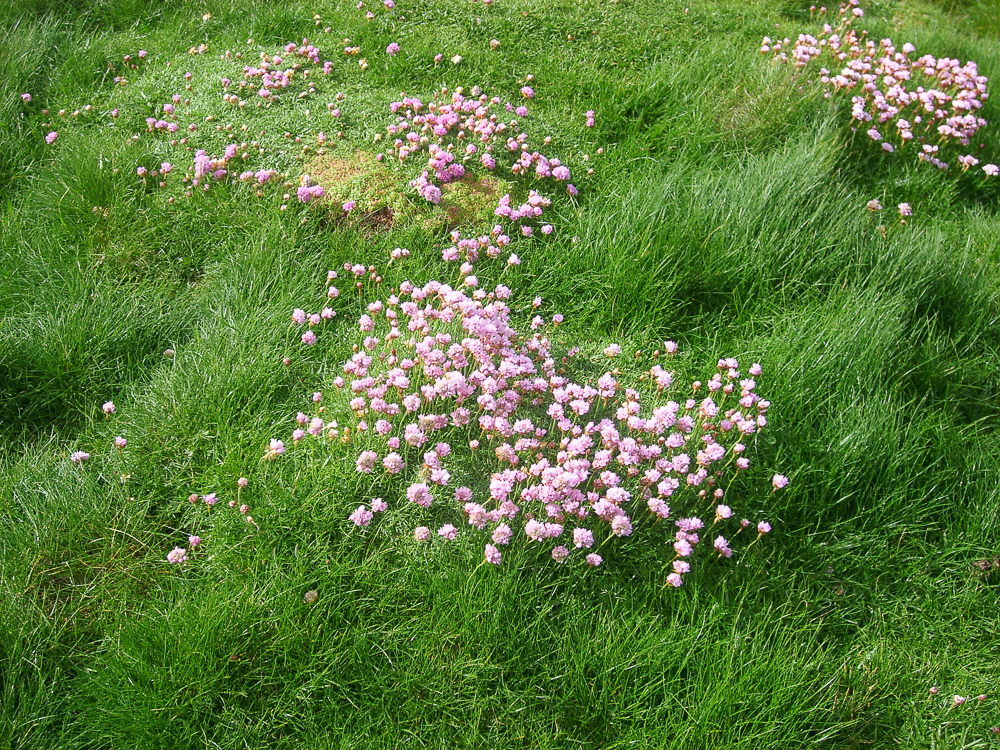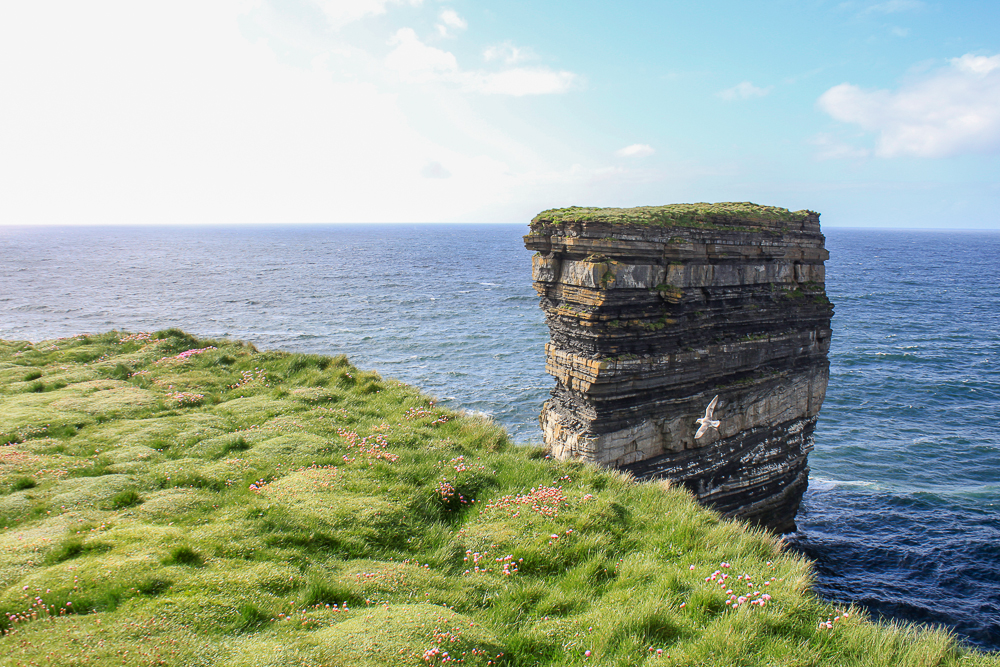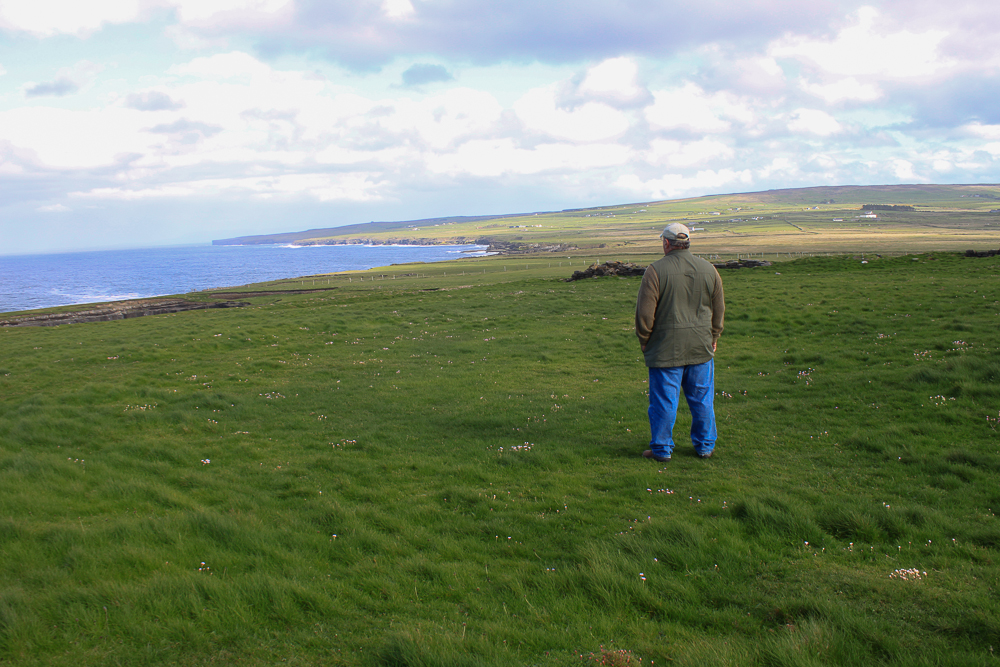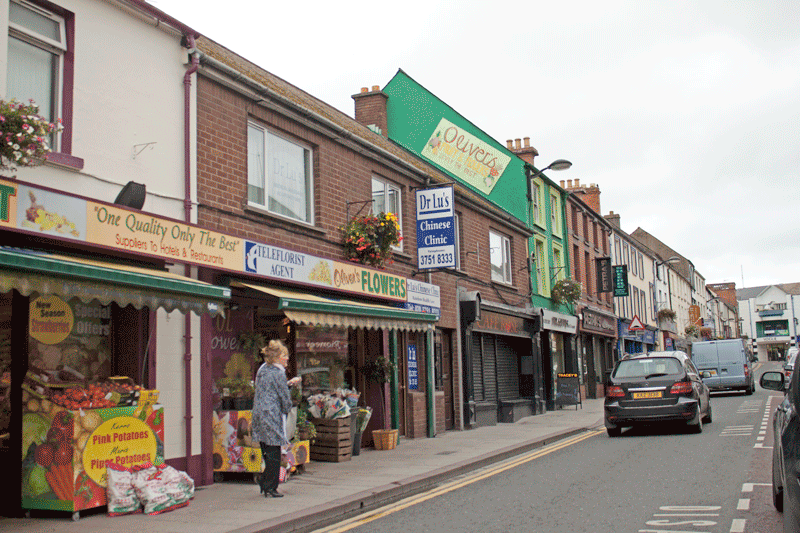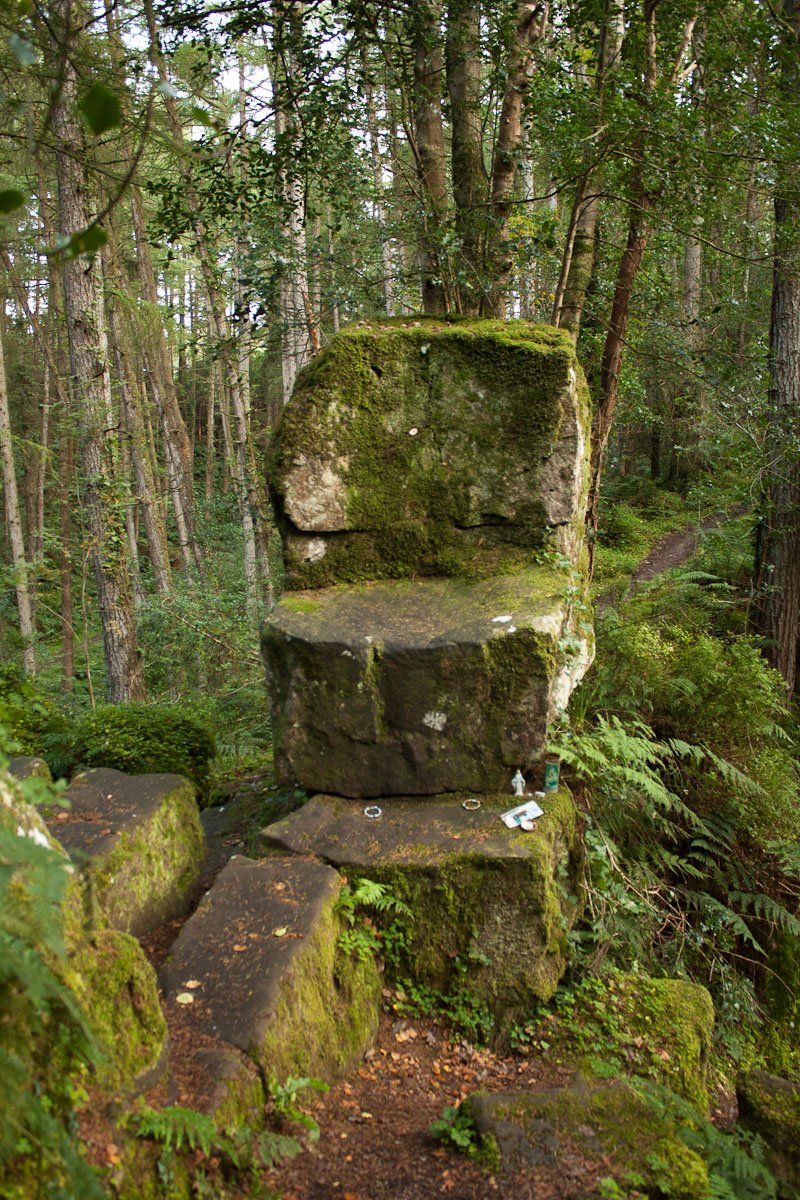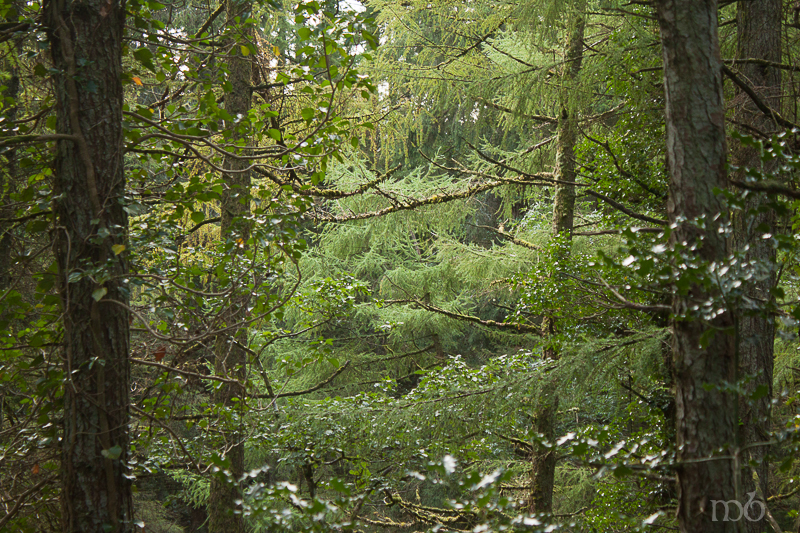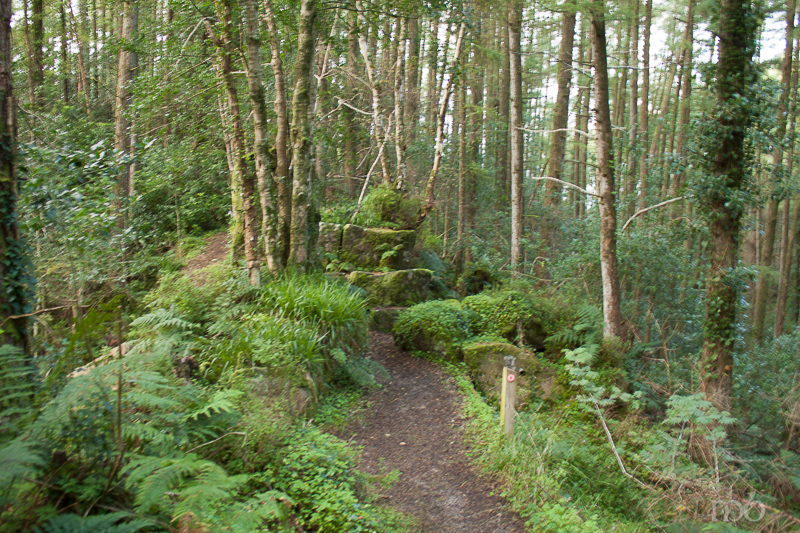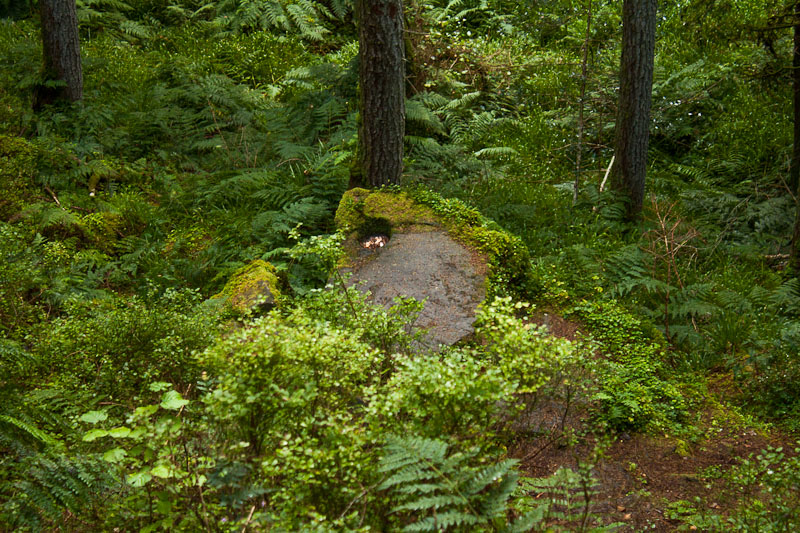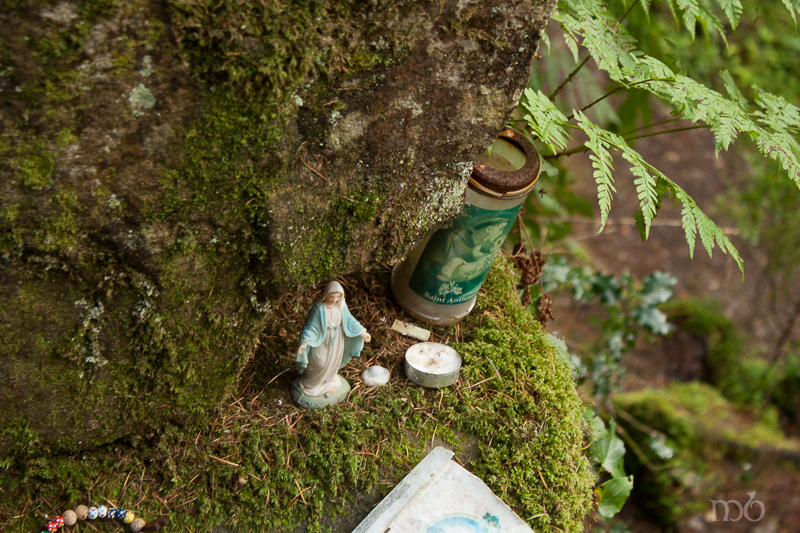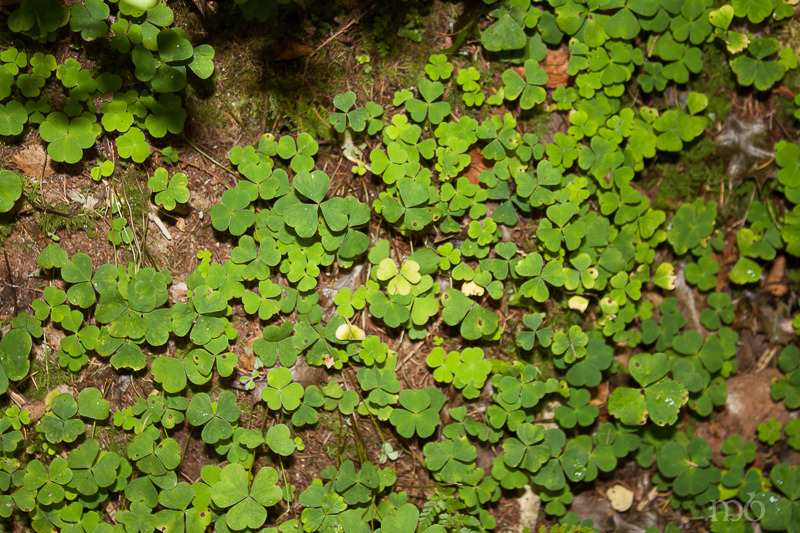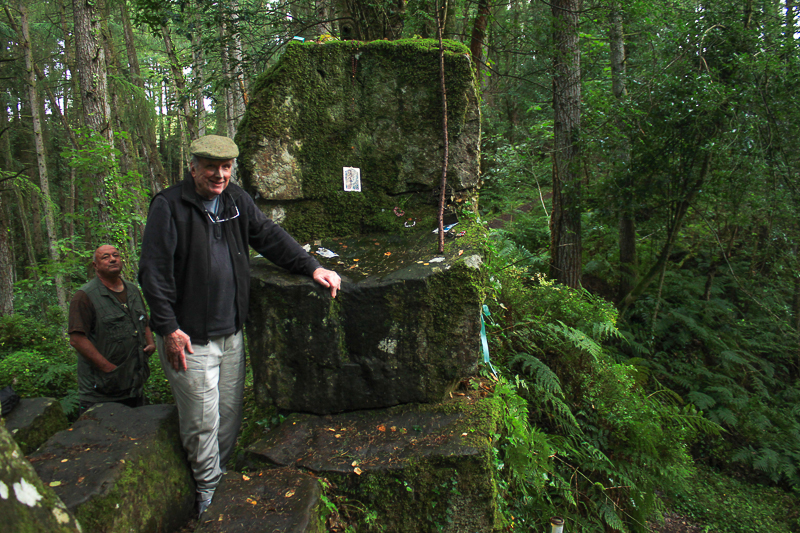Downpatrick Head Ireland
Downpatrick Head in Ireland is on the north coast of County Mayo. It was named for St. Patrick because he is believed to have built a church there, and there still are remains of an old church and a stone marker that supposedly shows where St. Patrick’s original church stood.
Downpatrick Head Ireland
As you approach Downpatrick Head the land opens up in a vast plateau overlooking the wild Atlantic Ocean. You are walking into one of the many “wild places” in Ireland. Even the most boisterous of travel groups will become quiet as they approach the cliffs. The landscape pulls each person into a walking meditation. It almost demands silence.
There’s a lovely cliff walk where one can survey the crashing waves of the Atlantic Ocean against the patterned cliffs while hundreds of birds roost in the crevices and swoop and dive all around the cliffs. We were there in May when the “sea pinks” were in bloom and we couldn’t resist taking pictures of them on the cliff tops.
We spent the morning in this magical thin place never noticing the passing of time.
There is also a holy well and a memorial to 25 Irishmen who fled from British Redcoats during a 1795 uprising. They hid in the caves at Downpatrick Head, but couldn’t get back out before the tide came in and flooded the cavern. They all perished.
But Downpatrick Head is best known for Dún Briste (Broken Fort) or “the sea stack” which is an outlying stone stack just off the cliff face. The landscape there defines “wild” which is so common to the West of Ireland.
Dún Briste – (broken fort) the sea stack is the landmark most associated with Downpatrick Head in Ireland on the north coast of County Mayo.
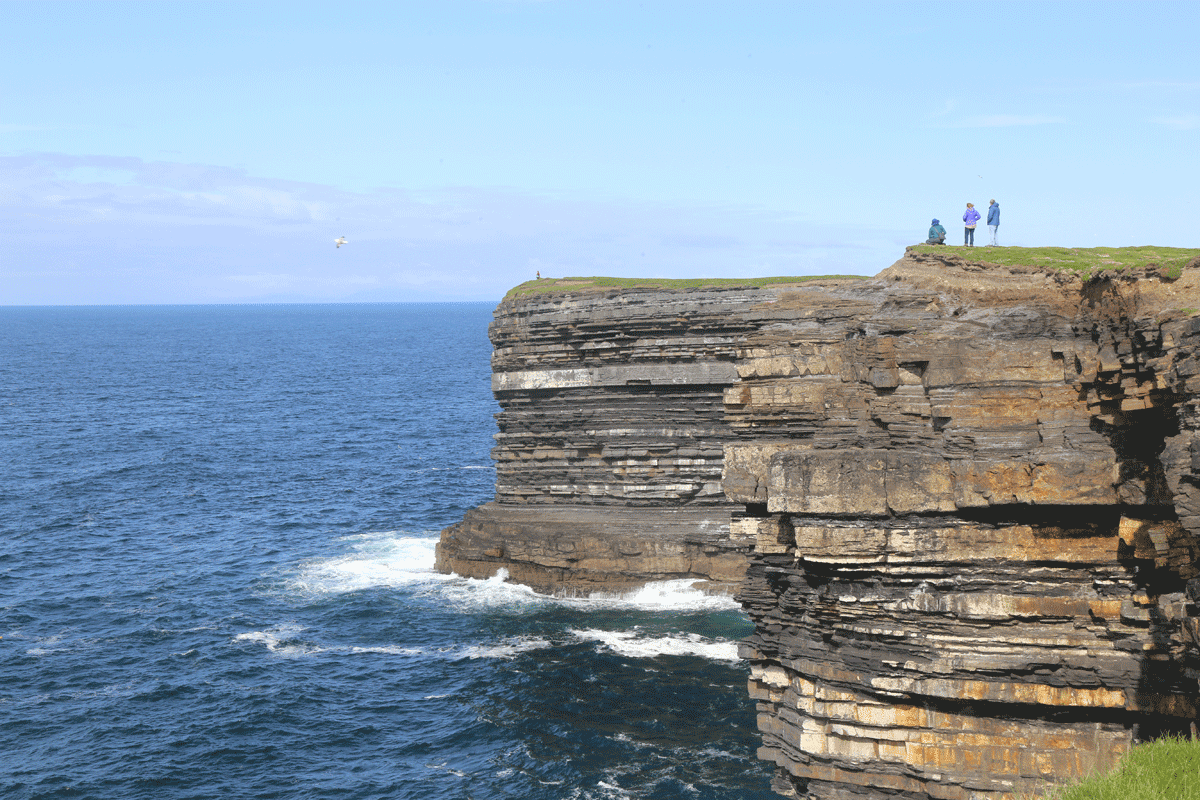
My mind frequently wanders to Ireland. In those rare, still, moments when I can close my eyes and imagine certain places, I almost always go to Ireland. In my imagination, I often place myself at Downpatrick Head. I contemplate the time change – Is it daylight or night time? Where is the moon (or sun)? Is it raining, cold, warm? Are the flowers peeking through the grass? I hear the sound of the waves, the wind, the birds. I feel the damp air. In my mind, I notice all of the details.
Once I settle into that landscape in my mind, the colors take over, then the sounds, then finally — the wind. It seems there’s always wind blowing in Ireland.
I’m reading a fantastic new book by Robert Macfarlane entitled Landmarks, which is about the language that developed around elements of the landscape in the UK and Ireland, and the power of “landscape language.” McFarlane comments in the very first chapter about language shifts that move away from nature and toward technology.
“…Under pressure, Oxford University Press revealed a list of the entries [in the new Oxford Junior Dictionary] it no longer felt to be relevant to modern-day childhood. The deletions included acorn, adder, ash, beech, bluebell, buttercup, catkin, conker, cowslip, cygnet, dandelion, fern, hazel, heather, heron, ivy, kingfisher, lark, mistletoe, nectar, newt, otter, pasture and willow. The words introduced to the new edition included attachment, block-graph, blog, broadband, bullet-point, celebrity, chatroom, committee, cut-and-paste, MP3 player and voice-mail.”
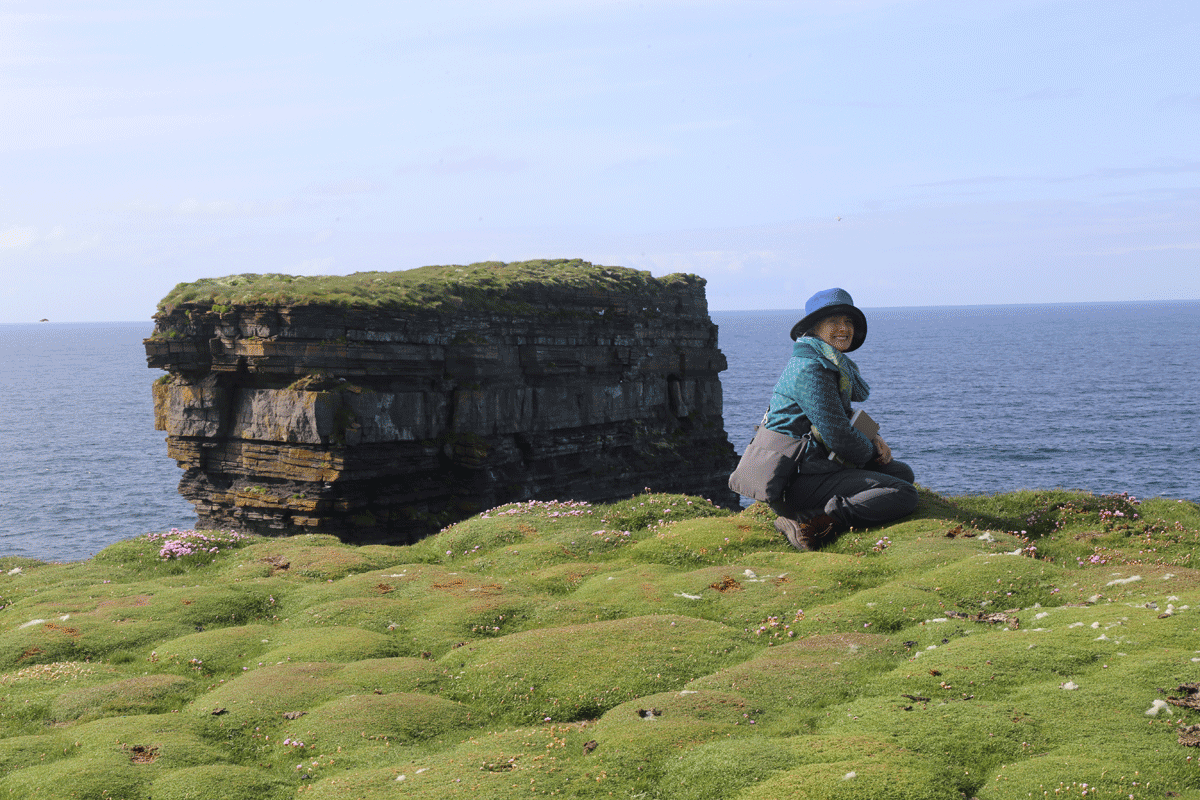
I plead guilty to loving technology, gadgets and the amazing world of telecommunication, but I’ve never embraced it at the expense of stopping and noticing the details in nature.
Sheep roam all over the cliffs at Downpatrick Head … just as they’ve been roaming for centuries. I wonder if they notice the details. Probably not.
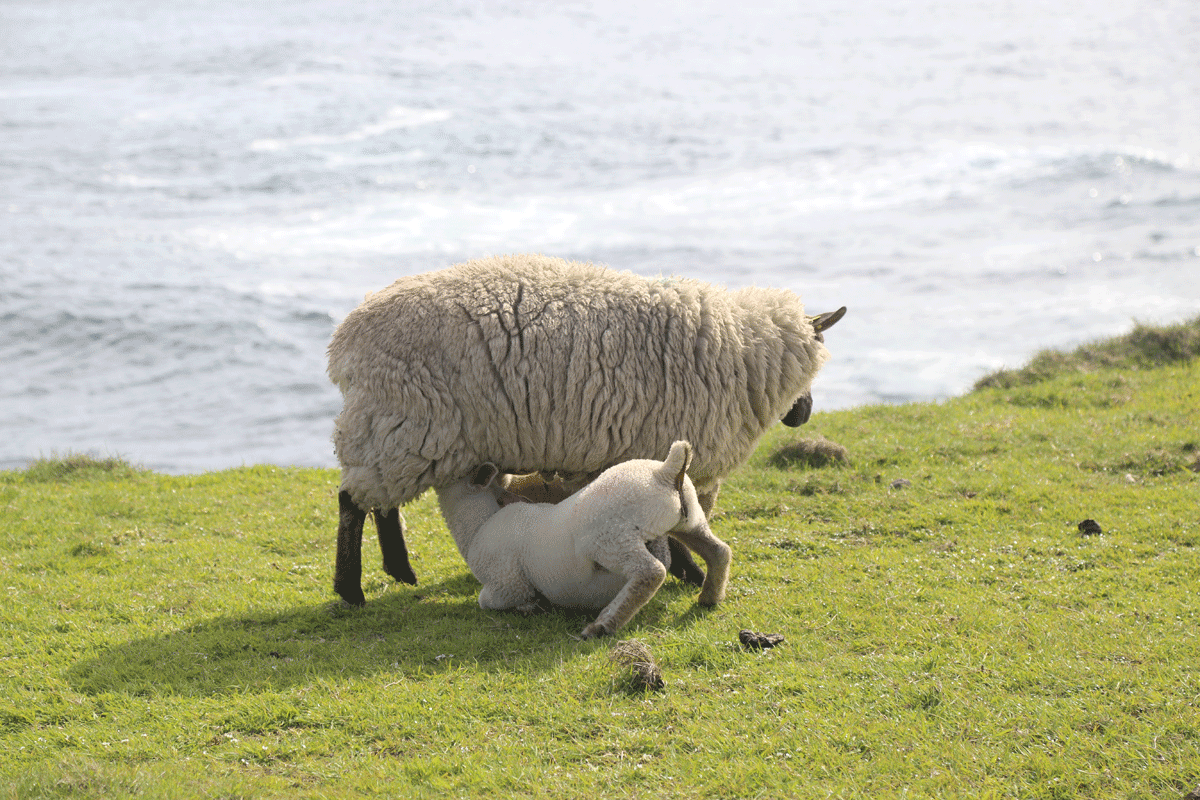
Downpatrick Head Sheep
Here’s to March … and here’s to Spring … and here’s to noticing the details. Those details – the things we only notice when we stand still and look – are the things that connect me to the thin places.
We explore Downpatrick Head is on some of our Thin Places Tours of the Wild Atlantic Way in Ireland.
Photos by Dan and me (Mindie Burgoyne). Special thanks to Joe McGowan and John Willmott who helped identify “sea pinks” and their healing properties.
St. Patrick’s and St. Patrick’s – Twins, Curses and Blessings in Armagh
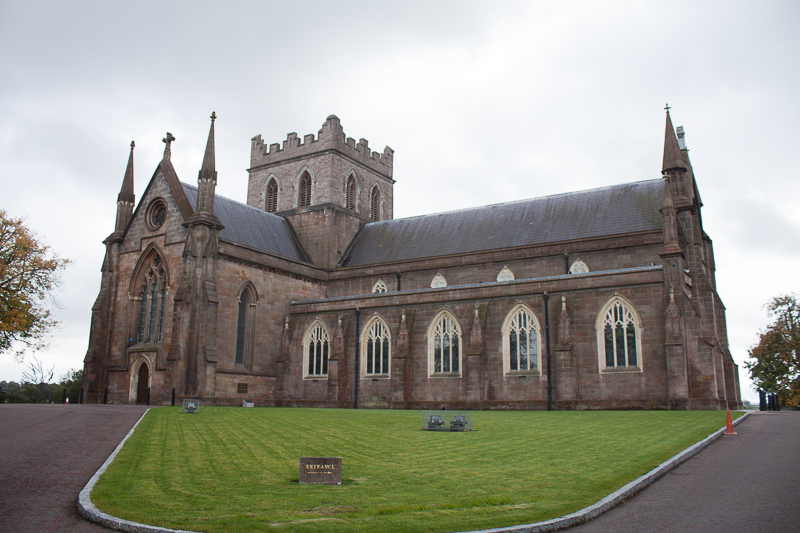 St. Patrick’s Cathedral in Armagh – Church of Ireland
St. Patrick’s Cathedral in Armagh – Church of Ireland
Coming into Armagh from the Monaghan Road one gets a dramatic view of the city skyline, especially at twilight. The view is dominated by two buildings on two hills – St. Patrick’s Cathedral and St. Patrick’s Cathedral.
Both are diocesan bishoprics, both are built on holy ground and both are tied to legends of St. Patrick. One is the Church of Ireland cathedral built on the ancient holy site where St. Patrick is believed to have built his first stone church in the 5th century. The other is a stunning Gothic-style Roman Catholic Cathedral, its cornerstone laid on St. Patrick’s Day 1840. It was completed in the early 20th century, with a serious halt to the construction during the Great Hunger. Armagh is known for being the ancient seat of the Ulster kings and the place that gave us the Knights of the Red Branch and Cuchulainn – the Hound of Ulster, a who was the Incredible Hulk of Ireland.
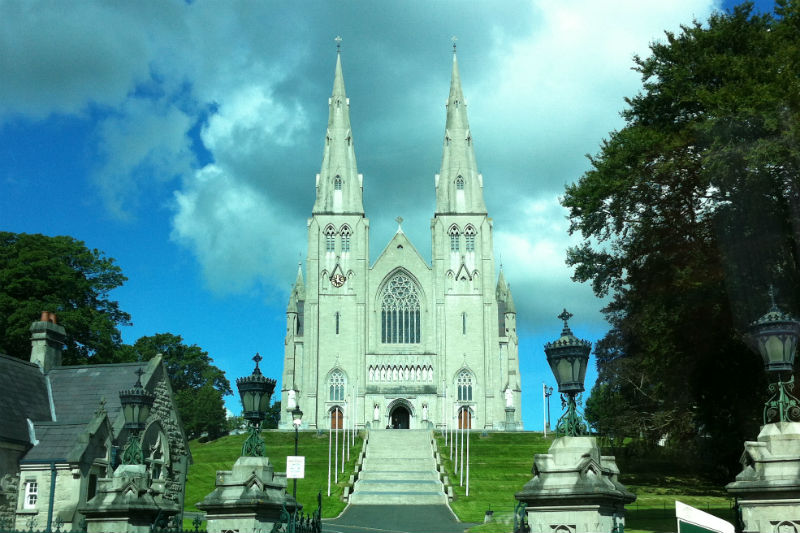 St. Patrick’s Cathedral in Armagh – Roman Catholic
St. Patrick’s Cathedral in Armagh – Roman Catholic
Armagh is also a city defined by twins linked to tragedy and triumph. Armagh comes from two Irish words that together mean the “Hill of Macha” or the “Height of Macha.”
Ard means hill or height and Macha is the name of an Ulster goddess who had super powers enabling her to run faster than any living creature. When she was pregnant and near delivery, her prideful husband boasted to the local king who was also prideful about his swift horses, that Macha could outrun them. The embarrassed king ordered Macha to prove it by racing his fastest horses in a competition staged in the presence of all of his friends.
Macha begged for mercy because she was heavily pregnant, but the king refused her pleas and forced her to run the race. Macha ran – and won. All, including the king were in awe of her strength. But at the end of the race Macha collapsed and died whilst giving birth to twins – a boy and a girl, one representing a blessing and the other a curse on the Ulstermen to last nine generations. The blessing was that Ulstermen would develop great strength and be the mightiest warriors in all the land. The curse was that at the times when they are in the greatest need, they would be stricken with the pains of childbirth and be incapacitated for five days and four nights. The boy went to sea (the otherworld) and met his mother and the other gods and goddesses. The girl stayed behind, motherless in a world that exploited and oppressed her kind.
Twin Cathedrals
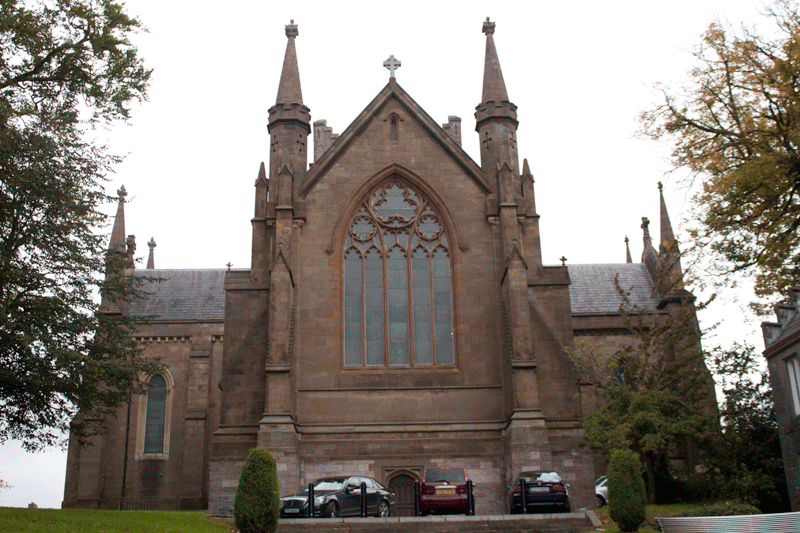 St. Patrick’s Cathedral (COI) in Armagh
St. Patrick’s Cathedral (COI) in Armagh
The twin pinnacles in the Armagh skyline are side-by-side hills each capped with a cathedral of two similar faiths. The two religions have a history of bloody conflict that goes back 700 years. They are the Catholics and the Protestants of Northern Ireland. Some say they mirror the ancient story of the twins of Macha, forced to be birthed violently because of pride, arrogance and greed. One allowed to be the warrior and the other oppressed with little power, forced into servitude. Triumph and tragedy. Blessing and curse.
But today’s Armagh shows few remnants of that conflict. People are warm and friendly, the downtown has nice shops and restaurants. It’s a busy town, but there are only scant traces of the brutal conflict that raged only a few decades. If I hadn’t been to Northern Ireland during the Troubles, I wouldn’t be able to measure the difference. But as a visiting American who traveled there both when the country was occupied and in recent years, I see the radical difference. Today there are no soldiers in the streets with machine guns, or crouching in alley ways, no razor wire, no moratorium on cameras and taking pictures, no tense people who don’t look up as you pass them on sidewalks – locals who provide no warm welcome for visitors… except for a few who were in the tourism business, and even they were guarded.
Armagh and the North – Good Times and Bad
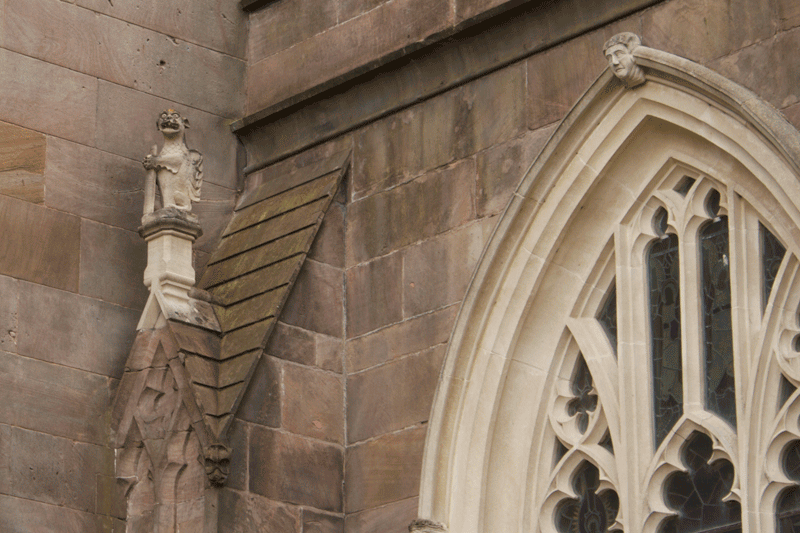 Gargoil on St. Patrick’s Cathedral in Armagh
Gargoil on St. Patrick’s Cathedral in Armagh
Don’t get me wrong. I loved Armagh then and I love it now as I love all of Northern Ireland. The only difference between the two time periods is that the curse is lifted. The two sides want to get along. They want peace. They want their children to be safe. They want to thrive economically and welcome visitors. Both sides know and always have known that they live in a magical land – a land of pristine beauty, a land of stories, a land of mystical energy. They’re eager to share their country’s treasures in the safe environment that has grown out of their commitment to peace. And visitors are very welcome.
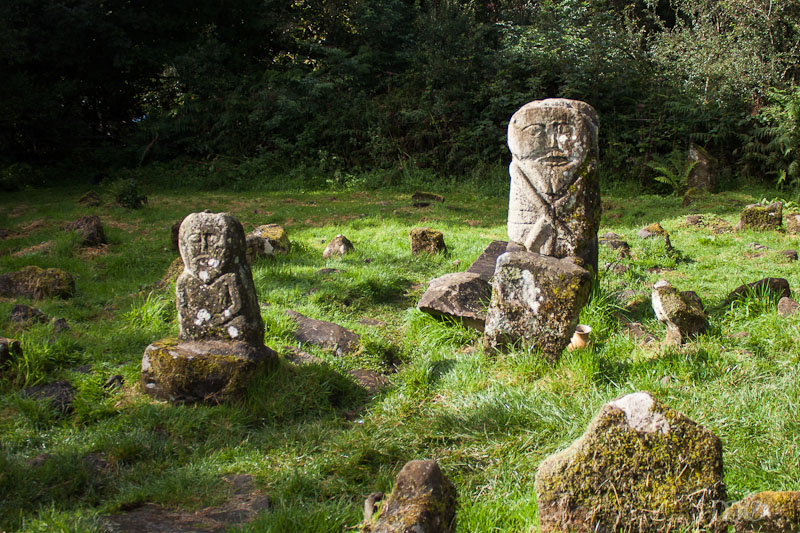 Janus figure – Caldragh Cemetery
Janus figure – Caldragh Cemetery
During all of the troubles and conflict, the ancient Janus figure still stood watch in that mystical cemetery named Caldragh in County Fermanagh. Saint Patrick’s Chair and holy well was still perched in the Altadaven Forest waiting for pilgrims to come forward and present their wishes. The sands of Whitepark Bay still sang in the wind. The stone circles at Beaghmore were still lying in wait in the shadow of the Sperrin Mountains ready to enchant the visitor looking for those spiritual ports in the storm that we call thin places. The North has always been beautiful and worth visiting, but it’s good to see the people of the North enjoying their land and each other.
Discover the North Tour
Both St. Patrick’s Cathedrals in Armagh are a part of our Discover the North tours as are St. Patrick’s Chair, Caldragh Cemetery, Beaghmore Stone Circles, Whitepark Bay and many other mystical sites.
Related Posts –
Padua House and Kathleen O’Hagan of Armagh
Armagh – Twin Symbols of Conflict and Unity
St. Patrick’s Chair – Make A Wish
The old County Tyrone legend states that if you sit in St. Patrick’s Chair located in the Altadaven Wood, and make a wish – that wish will come true within one year.
Mine did. But I’m not telling .. because you’re not supposed to tell. You’re supposed to keep it all to yourself.
This throne-like chair is carved out of one huge hunk of rock, and how it got placed so high on a cliff-like edge of the path through the woods is anyone’s guess. It’s been there for centuries.
Altadaven means “cliff of the demons.” It’s believed that this site, found deep in the thick forest surrounded by amazingly tall fir trees and hard woods with holly and ivy and fern lining the path, was once a meeting place for the druids. The legend tells of how St. Patrick came to this place and drove the demons (druids) “over the cliff.”
So what once was pagan became Christian. And what once was a center for druidic ritual became a center for prayer and Christian devotion. Today, tokens left behind at the site suggest both Christian and non-Christian people come as pilgrims to this powerful site.
There is a definite separation of energy at the entrance to Favour Royal Forest – as it used to be known. The entrance to the forest is a defined edge, with a keen sense of power. It’s a crossing, an opening into place with different energy.
The forest is thick and damp and the trees tall and slim with feathery leaves. The path is lined with ivy and fern. It is part of an old road called the Sliabh Beagh Way that runs across the countryside. It’s long been known as and enchanted road, and the forest around this part of the path is still referred to as the Fairy Green. It ascends to Pinnacle Rock which is where the Chair is.
I knew that we were on our way to see St. Patrick’s Chair because a friend brought me there. But I wonder how travelers would feel who didn’t know it was there – they were just walking this ancient path feeling the closeness of the trees and the energy around them… and then …. at the top of a rise they see this throne-like chair, six feet high, hewn from a boulder. And suddenly they know this is some special place. Some amazing place of resurrection.
From the chair there is a steep path leading down to another massive rock, this one with a small well carved out. There is water in the well and the path is lined with clooties and rags left behind by people who brought burdens to this holy well. They say the well never runs dry and that the water has healing properties. Others say the rock with the bullaun is covering an open chamber.
Tokens have been placed on the chair by pilgrims. Rosaries, holy cards, medals, statues, coins, a candle. The air is thick with wishes and dreams both recent and ancient. So many hopes are left to rest on St. Patrick’s Chair.
If you visit St. Patrick’s Chair, be sure to make your own wish. But don’t tell anyone.
The air around this place is charged with an energy that is no so gentle but more powerful, thick with presence. And the beauty of the forest is stunning. So much of Ireland is rock and open fields and rolling hills. A forest that one can easily walk through is a special to find.
If ever there was a portal into the world beyond this on, it would be here.
St. Patrick’s Chair and Holy Well are on the 2014 Discover the North Tour of Ireland.

